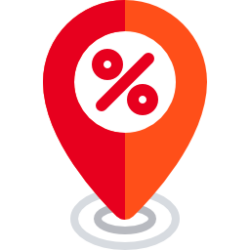A Smarter Way to Offer Discounts and Incentives Online

Why?
Discounts and incentives cost you both money and branding equity. You should only use them when it seems the visitor will not buy. You probably already use simple timed or exit intent triggers to do that, but these are crude behavioral indicators. Something smarter is needed.
How?
First, observe enough visitors to your site and see the behavioral patterns of those who buy and those who don’t. Time their visit, but also “follow” them around. Where do they go with their mouse on the page? What do they click? Where do they hover for longer time periods, etc? All this can and is already done today, but we need to take this further – use the information to match future visitors behavior. If there are distinct patterns that can predict a purchase, you can then only show the incentives when visitors do not match these patterns. Even better, if a “non buyer” pattern also emerges, only show the incentives to visitors exhibiting such a pattern.
Know Where Is What You’re Looking for in a Large Store

Why?
You enter a large store, and it’s hard to know exactly where is what.
How?
There is the simple solution that unfortunately I never encounter: give a map at the entrance.
Another more sophisticated solution would be an app that identifies what store you’re in by your location, and automatically shows a map for that store. It can also give you a list of products or product types and when you select will show you where it is on the store map.
A Controversial Marketing Tactic for Selling to the Affluent by Using Both Exclusivity and Free at the Same Time

Why?
- It has an appeal to the affluent market. Firstly the exclusivity, and secondly by gifting, they can show others that they are affluent.
- It shines a certain light on the brand selling it this way.
- It’s a controversial marketing ploy. Firstly because it’s only available to the affluent, which will offend many who think equality is fair. Secondly because of the contrast of high price and free within the same product.
- It makes the buyer into a distribution channel.
How?
Sell the actual product for a high price for the product category. Give the buyer two things: a guarantee it will never be sold for a lower price; “lower quality” copies to give out freely.
For instance, a book could be priced at $100 or more, and the buyer will get either a certain number of softcover copies of the book, or an ebook (better to make these personalized with his name), that he can give away to anyone for free.
Let Potential Advertisers See Which Brand Do Your Fans and Followers Like

Why?
If these potential advertisers see that you have many fans that also like their brand, they might advertise with you. Good for you and your fans.
How?
Have a constant voting section on your website where your fans can vote for any of the brands you list there, and also suggest a new brand to include in the list.
Scrambled Words Ads That Grab Attention

Why?
To stand out from the many other ads out there.
How?
Research showed that some words, when they have their letters mixed up – except the first and last letters – are still readable by us. Use this technique in ads to grab attention.
